High-End Brands Face the Best of Times, the Worst of Times
It was the best of times, it was the worst of times, it was the age of wisdom, it was the age of foolishness, it was the epoch of belief, it was the epoch of incredulity, it was the season of Light, it was the season of Darkness, it was the spring of hope, it was the winter of despair, we had everything before us, we had nothing before us, we were all going direct to Heaven, we were all going direct the other way. — Charles Dickens – A Tale of Two Cities
The Wall Street Journal recently published a fascinating piece about recent growth among luxury brands.
“An accelerating turnaround in the luxury industry is whetting the appetites of investors encouraged by receding security fears in Europe and potential U.S. tax cuts for the wealthy.
That confluence of global forces, analysts say, is stoking expectations that the industry’s biggest players are due to report strong year-end earnings in the coming weeks,” wrote WSJ’s Matthew Dalton.
The article cites anticipated earnings releases from luxury bellwethers LVMH (net profits expected to jump 15%) and Richemont (sales last quarter up 6%), as well as the S&P Global Luxury Index (up 4.5% so far this year).
Dalton writes that the headwinds luxury brands have faced in recent years may be easing. “In the U.S., the raucous presidential election combined with stock-market volatility likely damped spending on luxury goods last year, analysts say. The terrorist attacks in Paris, Brussels and Nice have deterred Chinese and U.S. shoppers from coming to Europe, and Chinese and American consumers who shop at home haven’t picked up the slack,” he writes.
Dalton quotes Mario Ortelli, a luxury analyst at Bernstein, “This is the business of happiness. You buy these kinds of products when things are stable.”
Clearly, the market believes – at least for the moment – that things may be stable. The overall DJIA has risen from 17,888 on the Monday before Election Day to 20,138 as I write this post on February 9, 2017. That’s a 2,250-point increase in 13 weeks.
But is there anything to be worried about behind this exuberance?
Seth Klarman thinks so.
He is “the most successful and influential investor you have probably never heard of,” according to a recent piece in the New York Times, written by Andrew Ross Sorkin, which profiled the hedge fund manager and a private letter he wrote recently to his investors about the current state of the economy.
Klarman is concerned about the market’s euphoria since President Trump took office, specifically focusing on high valuations. “Exuberant investors have focused on the potential benefits of stimulative tax cuts, while mostly ignoring the risks from America-first protectionism and the erection of new trade barriers,” writes Klarman in his letter. “The big picture for investors is this: Trump is high volatility, and investors generally abhor volatility and shun uncertainty.”
So, what gives? Are things stable or volatile? Do we have certainty or uncertainty? And what might the impact be on high-end brands?
As you might imagine from the title of this piece, A Tale of Two Cities, I tend to believe that we are in a both/and kind of situation, rather than a clear-cut either/or environment. I believe that C-suite executives at high-end brands are going to be required to navigate through uncertainty during the coming few years – and will need to be nimble enough to flex during the best of times and the worst of times, especially when it seems like both are occurring simultaneously.
In addition to agility, marketers will need acuity and adaptability, especially when it comes to knowing their customers and prospects. In my opinion, despite the fact that they are clearly buying more luxury goods from LVMH and Richemont, affluent consumers are actually pretty anxious. The market may appear to be stable at the moment, but underneath, the uncertainty is also driving anxiety.
The New Yorker recently reported on the growing anxiety among the high net worth individuals, manifested in a variety of “doomsday” preparations, including the purchase of $3 million fortified survival condos. The article quotes a managing director of a Silicon Valley venture-capital firm, who says, “There’s a bunch of us in the Valley. We meet up and have these financial-hacking dinners and talk about backup plans people are doing. It runs the gamut from a lot of people stocking up on Bitcoin and cryptocurrency, to figuring out how to get second passports if they need it, to having vacation homes in other countries that could be escape havens.”
The article’s writer, Evan Osnos, observes that this anxiety cuts across political lines. “Even financiers who supported Trump for President, hoping that he would cut taxes and regulations, have been unnerved at the ways his insurgent campaign seems to have hastened a collapse of respect for established institutions,” he writes.
Affluents are dialed-in more than ever to the angst that separates nation from nation and class from class – and their spending habits over the coming year will reflect it. That said, how can you maximize your brand’s opportunity for success?
- Agility: Ensure that your marketing plans are nimble enough to flex when times are good, bad, and sometimes, both.
- Acuity: Get a good read on current and prospective customers to discover how your brand might fit with their spoken (and unspoken) needs.
- Adaptability: Position your team to be able to evolve quickly when the market changes.
If you know your affluent consumer well, and understand what’s driving them – and if you can move quickly – I believe that you are in a better position to help your brand serve as a sort of port in the storm in the days to come.


